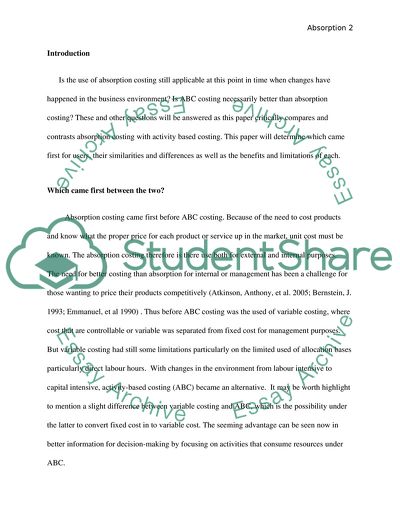Cite this document
(CRITICALLY COMPARE AND CONTRAST ABSORPTION COSTING WITH ACTIVITY BASED Essay, n.d.)
CRITICALLY COMPARE AND CONTRAST ABSORPTION COSTING WITH ACTIVITY BASED Essay. https://studentshare.org/finance-accounting/1761956-critically-compare-and-contrast-absorption-costing-with-activity-based-costing
CRITICALLY COMPARE AND CONTRAST ABSORPTION COSTING WITH ACTIVITY BASED Essay. https://studentshare.org/finance-accounting/1761956-critically-compare-and-contrast-absorption-costing-with-activity-based-costing
(CRITICALLY COMPARE AND CONTRAST ABSORPTION COSTING WITH ACTIVITY BASED Essay)
CRITICALLY COMPARE AND CONTRAST ABSORPTION COSTING WITH ACTIVITY BASED Essay. https://studentshare.org/finance-accounting/1761956-critically-compare-and-contrast-absorption-costing-with-activity-based-costing.
CRITICALLY COMPARE AND CONTRAST ABSORPTION COSTING WITH ACTIVITY BASED Essay. https://studentshare.org/finance-accounting/1761956-critically-compare-and-contrast-absorption-costing-with-activity-based-costing.
“CRITICALLY COMPARE AND CONTRAST ABSORPTION COSTING WITH ACTIVITY BASED Essay”. https://studentshare.org/finance-accounting/1761956-critically-compare-and-contrast-absorption-costing-with-activity-based-costing.


